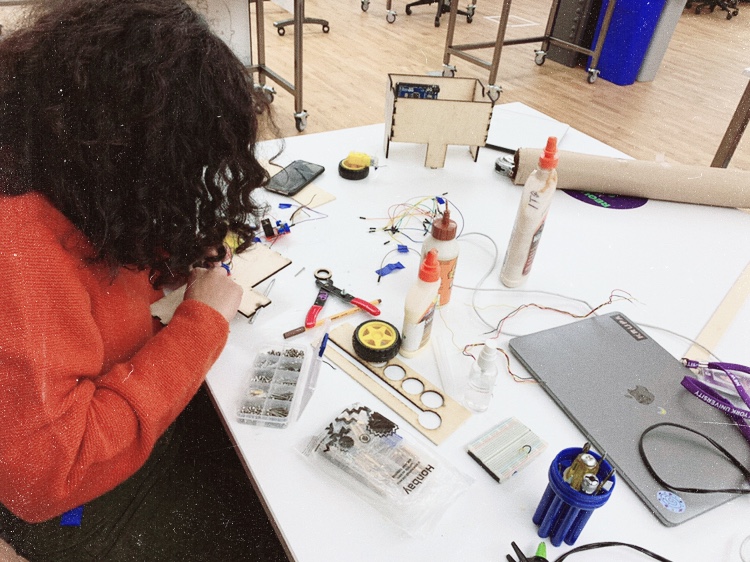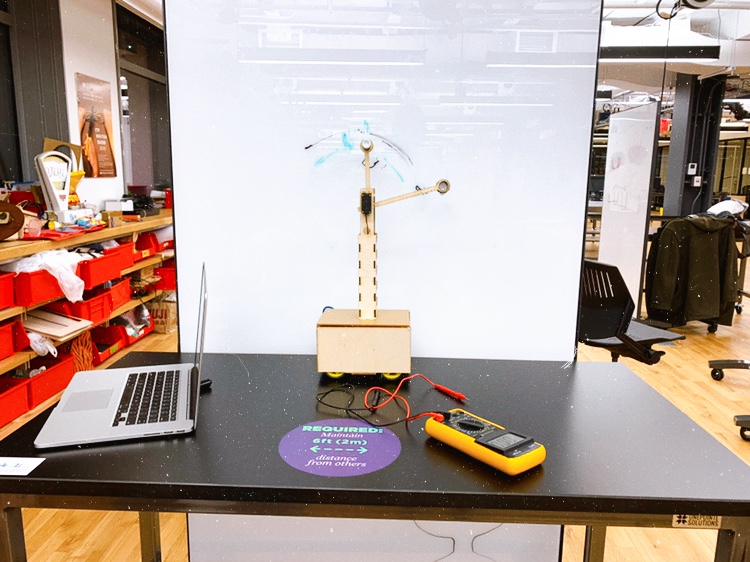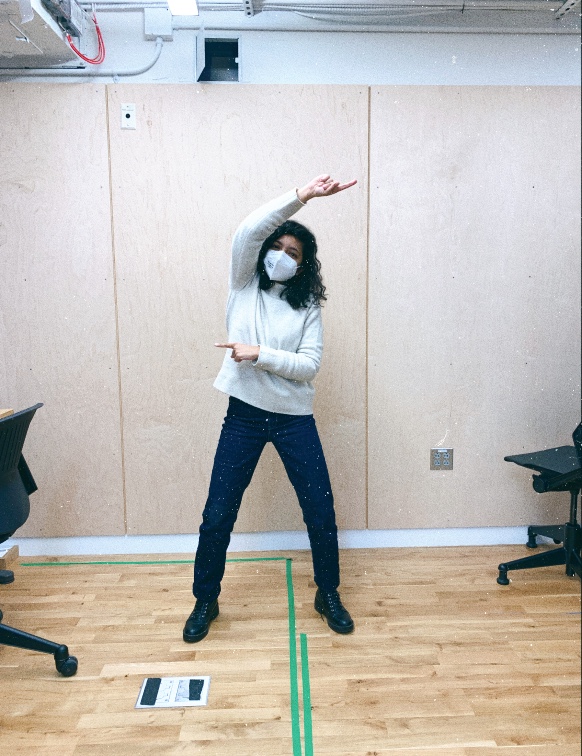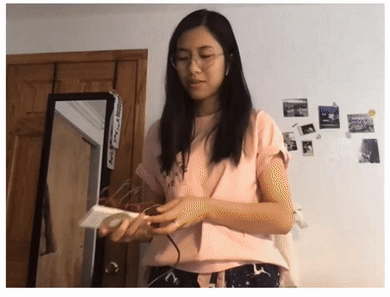Mr. Scribbles: Dancing Drawing Robot
2020The Dancing Drawing Robot was created to help people feel more comfortable about their bodies, about their movements — about being weird sometimes.
To control the robot, try to recreate the dancing poses!



Roles
- Pose classification and user interface by Yona Ngo.
- Physical computing by Stuti Mohgaonkar.
- Fabrication by Yona Ngo and Stuti Mohgaonkar.
- Supervised by David Rios & Luisa Pereira.
Some people love expressing themselves while dancing; some people do it while drawing. We thought, why don't we combine those two and create something fun?
The Dancing Drawing Robot was created to help people feel more comfortable about their bodies, about their movements — about being weird sometimes ;)
The Dancing Drawing Robot was created to help people feel more comfortable about their bodies, about their movements — about being weird sometimes ;)
To control the robot, try to recreate the given poses. The robot can move from left to right and has two arms that can rotate 180 degrees.


Background
The Dancing Drawing Robot started out as a solely drawing app project with PoseNet and circular potentiometer and switch buttons as a physical controller to navigate through the app. The main goal was to discover the new ways of using the physical computing and machine learning algorithms to create interactive experiences. After multiple iterations it was decided to take a completely opposite approach — what if the user could use machine learning to control someting physical? It was also important for us to create something fun that would help people to feel free and entertained.


How It Works
Mr. Scribbles is a robot that can move from left to right, right to left and draw with two “hands” that hold the pens. To control the robot the user stands in front of the camera and recreates one out of 10 poses that the pretrained model can recognize.

Tools & Process
Mr. Scribbles was created using ml5js, p5js and Arduino Mega. Read more about the development process here.
Mr. Scribbles was created using ml5js, p5js and Arduino Mega. Read more about the development process here.
Thank Thank Thank
Special thank you to the people that contributed to this project: David Rios for supervising, Alan Winslow for helping with the video, Viole He, Kevin He, Shira Levi Sun for posing for the data collection, and ITP for having us.
Features
This project got featured at ITP/IMA Winter Show 2020.